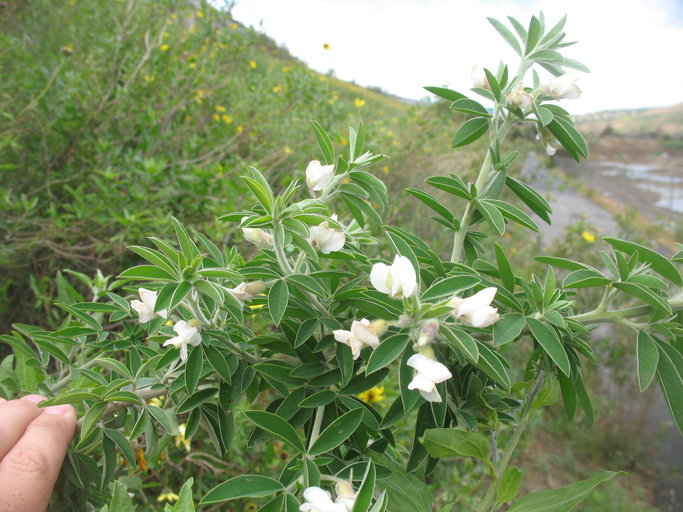Created on: Thursday, May 19th, 2016
Chamaecytisus palmensis is listed on Tropicos, but GBIF gives the accepted name as Cytisus proliferus with Chamaecytisus palmensis as a synonym. Listed as a shrub by Calflora. The following webpages were consulted for this screen: Tropicos: http://www.tropicos.org/Name/13074972; ARS GRIN: https://npgsweb.ars-grin.gov/gringlobal/taxonomydetail.aspx?id=13008; The Plant List: http://www.theplantlist.org/tpl/record/ild-33140; USDA PLANTS: http://plants.usda.gov/core/profile?symbol=CHPA44; GBIF: http://www.gbif.org/species/5354646; http://www.gbif.org/species/5354650; EOL: http://www.eol.org/pages/703579/details; TERRAIN: http://www.terrain.net.nz/friends-of-te-henui-group/weeds/tree-lucerne-c... Florabase: https://florabase.dpaw.wa.gov.au/browse/profile/18156; Weeds of Australia: http://keyserver.lucidcentral.org/weeds/data/media/Html/chamaecytisus_pa... congener (http://keyserver.lucidcentral.org/weeds/data/media/Html/cytisus_multiflo...); Herbiguide: http://www.herbiguide.com.au/Descriptions/hg_Tagasaste.htm; Cal-IPC Weed Alert: http://www.cal-ipc.org/ip/management/alerts/pdf/07weedalerts.pdf; NSW Agriculture: http://www.dpi.nsw.gov.au/__data/assets/pdf_file/0005/147272/tagasaste.pdf; Wikipedia (congener): https://en.wikipedia.org/wiki/Cytisus_scoparius; Cal-IPC (congeners): http://www.cal-ipc.org/ip/management/plant_profiles/Cytisus_striatus.php; UC IPM (congener): http://www.ipm.ucdavis.edu/PMG/PESTNOTES/pn74147.html; Calflora: http://www.calflora.org/cgi-bin/species_query.cgi?where-calrecnum=11587; Jepson: http://ucjeps.berkeley.edu/eflora/eflora_display.php?tid=22195
Reviewed by Gina Darin and Irina Irvine.
- < 13 : accept (low risk of invasiveness)
- 13 - 15 : evaluate further
- > 15 : reject (high risk of invasiveness)

